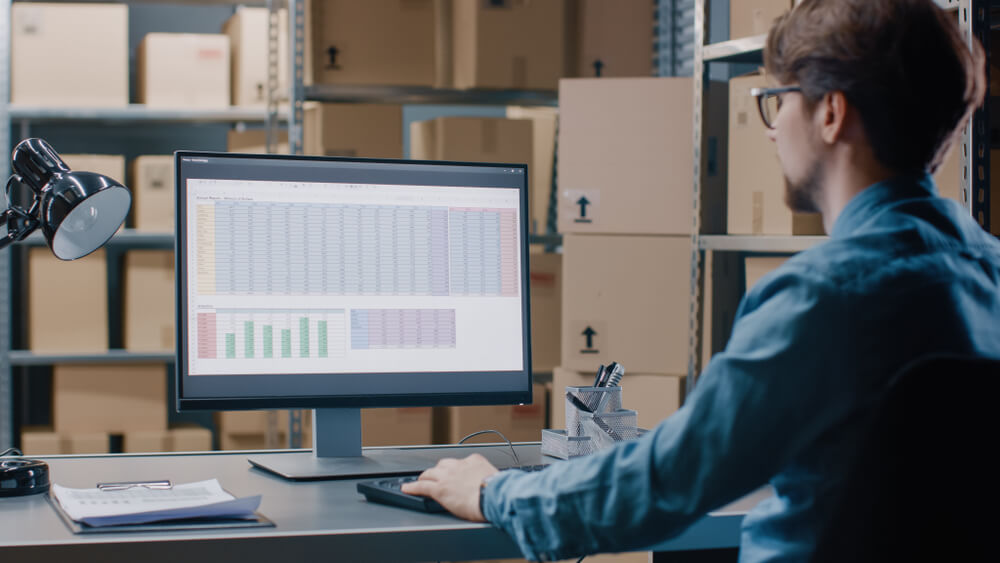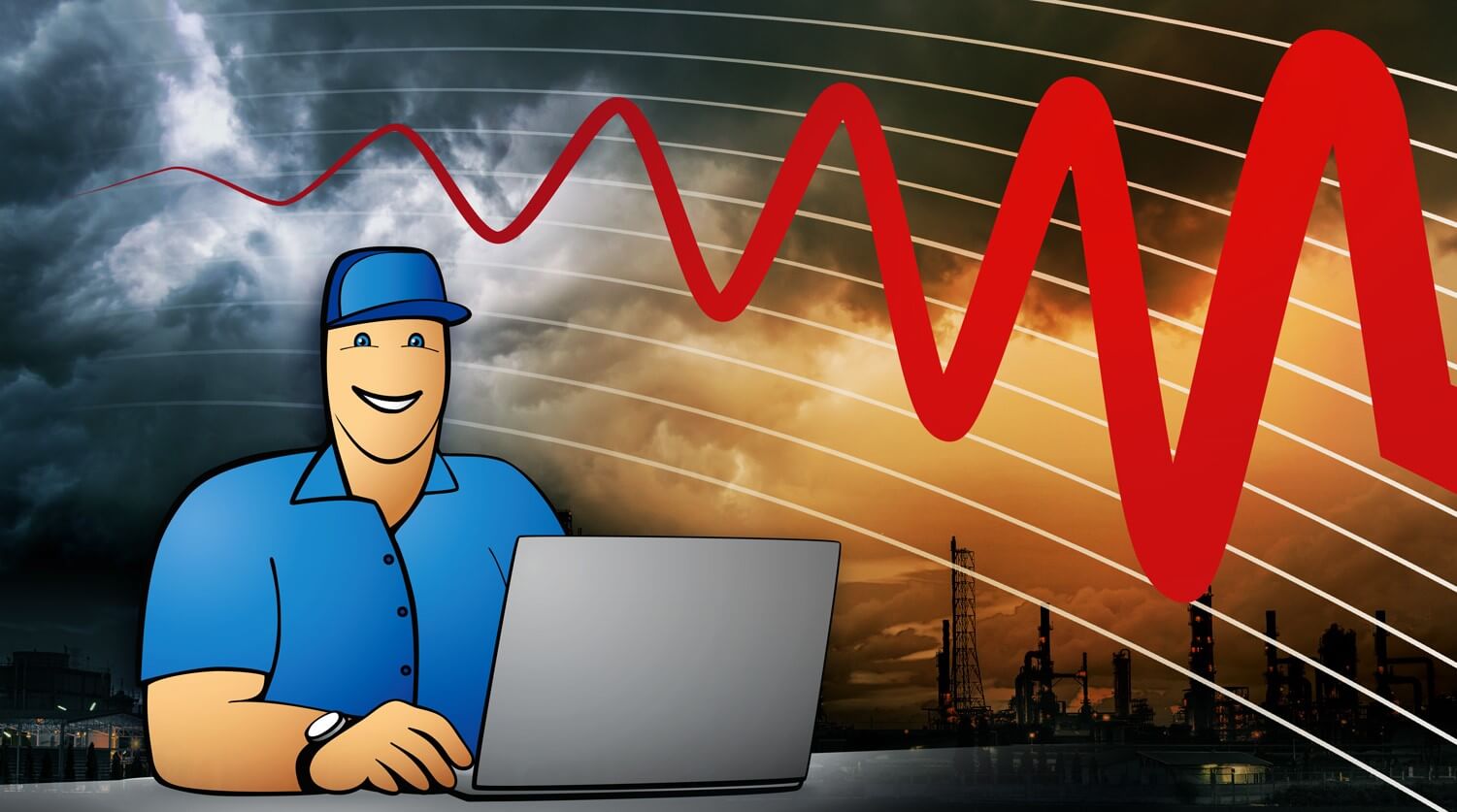Push System vs. Pull System in Manufacturing Management
Push and pull systems are supply chain management strategies that are used depending on the uncertainty of the demand for a product. While push and pull are very different approaches, many companies also adopt a hybrid push-pull strategy.

You can also listen to this article:
What is a Push System?
In manufacturing, a push system means that a company produces goods according to a demand forecast. This is also called make-to-stock manufacturing and it is often used to produce goods that have a low chance of unforeseeable demand fluctuations, e.g. food, pharmaceuticals, household chemicals, electronic devices, etc.
A push system, therefore, starts production in order to anticipate future demand that has been estimated according to historical data. In this supply chain management system, goods are “pushed” through the supply chain, with the demand forecast triggering production, and with finished goods being dispatched to distributors or retailers that will then market the products and wait for customers to make the purchase.
A great example of using a push system would be a bakery where the decision on which goods and which quantities to bake is done according to how much is expected to be sold. As people are not willing to wait an hour for their morning bagel after they put in an order, a push system is used.
What is a Pull System?
The pull system is a lean manufacturing strategy where goods are produced according to actual demand as opposed to forecasts. In this kind of manufacturing system, companies only keep as much inventory and produce as much as is needed to respond to existing customer orders.
In a pull system, goods are therefore “pulled” through the supply chain, with a customer order triggering a sequence of events where the required quantity of products are made, and raw materials used in the production of said products are replenished.
A great example of a pull system is just-in-time manufacturing, pioneered by Toyota in the second half of the 20th century. The core idea of JIT is to schedule the process so that materials would reach the facility exactly when production is scheduled to start, and production is scheduled so that it would be finished just as the goods should be dispatched to the customer.
Another popular approach to pull production systems is Kanban. Kanbans are visual cues that trigger production and inventory movements. For example, when a single item has a Kanban attached and it reaches the end of the supply chain, i.e. the customer, the Kanban is sent back to the start of the supply chain, triggering another production cycle. Another simple approach to Kanban is the two-bin system where two bins of a product are kept at the point of consumption or sale. When one bin gets empty, it is sent back as a signal to trigger production so that the bin could be filled again. As a consequence, materials are fed into the system on demand, preventing both stockouts as well as excess inventory.
Push System vs. Pull System
The main difference between push and pull strategies is that in a push system, production dictates how much of the product will reach the market while in a pull system, current customer demand dictates how much to produce. This key factor of what triggers activities in the supply chain leads to an array of distinctions between the two systems.
WIP inventory in push vs. pull
One of the major things that set push and pull systems apart is the amount of WIP inventory allowed. In a push system, there is no definite limit on WIP inventory because there are no signals coming back to the production floor. In a pull system, however, the system itself regulates the amount of WIP.
Specifically, the WIP limit is reached when there are no products that can be sold or consumed, i.e. there will be no signal that would trigger another replenishment. That means at least one unit of product in WIP needs to be finished and sold before there can be another replenishment signal.
Inventory costs
As the push system relies on forecasts to determine the volume of production, and forecasts are almost never 100% accurate, it might result in unsold merchandise that, at best, would take up inventory management resources and storage space. In the worst-case scenario, however, the unsold goods could also end up becoming dead stock. Either way, inventory costs would be higher than necessary.
A pull system, however, only produces as much as the customers have ordered. This way, inventory is kept at a bare minimum at all times as finished products are promptly delivered to customers, raw material inventories are replenished as needed, and WIP is limited. Minimal inventory levels, however, mean less space and labor wasted on storing and handling the goods, which in turn means lower inventory costs.
Product availability
The goal of a push system is to ensure a service level that would guarantee product availability at all times. While a pull system reacts to customer orders, a push system anticipates them and makes sure that customers get their merchandise in the required quantity as soon as possible. This is especially important in market sectors where lead times play an important role in the decision-making processes of customers.
Product customization
When a company offers its customers customization options, it would mostly do well to implement some features from a pull system in its production process. If not, they would need to build many different variants into stock, complicating their manufacturing processes and expanding their inventory and the associated costs in the process.
With a pull system, however, manufacturers of customizable goods can keep their inventory minimized. In the case of mass customization, a hybrid version of the two systems can be successfully implemented. For example, a manufacturer can use the push strategy to stock up on base products with no customization and then bring in a pull element at the end of the production line where the final customization is triggered by a customer order. This is called a push-pull system.
Push-Pull System
Push and pull systems can work well together, bringing forth benefits from both systems. In this case, manufacturers use demand forecasting to determine the quantities of goods to be used as the base inventory but use customer orders to trigger further production.
Let’s say a high-end wooden furniture manufacturer knows that they sell three tables per week on average but there have also been weeks when customers have bought six or seven. As one table takes them one and a half workdays to finish, they could respond to their average demand week-by-week without holding any extra stock. However, they need to have some safety stock to respond to the spikes in consumer demand. In this case, the push system creates a surplus of tables that are expected to be sold, and the pull system replenishes the safety stock when items are sold.
Another example of a push-pull system would be when a manufacturer would stock up on raw materials (push system) but use them in production only when an order comes in (pull system). The same goes for the above-mentioned case, where the company offers customization options.
Push, Pull, and MRP
Although traditional material requirements planning (MRP I) can be regarded as a push system that acts according to a master production schedule that is based on forecasts, today’s manufacturing resource planning systems (MRP II) can also complement pull systems.
As the data integration ability of modern cloud-based software systems sets a basis for real-time management of all aspects of the business, modern MRP systems can check material availability and schedule both production and purchases as soon as a customer order is received. The consumption of stock items is reflected in the system, production activities and WIP inventory are tracked, as are dozens of business metrics. The visual cues of a Kanban system are therefore just transformed into digital signals, with the software dictating the flow of information.
That means modern ERP/MRP systems can be utilized as a business management tool in both push and pull systems, as well as in the hybrid push-pull system.
Read more about Material Requirements Planning.
Key takeaways
- A push system (also called make-to-stock) means that a company produces goods according to a demand forecast. It is often used to produce goods with a low chance of unforeseeable demand fluctuations, e.g. food, pharmaceuticals, household chemicals, etc.
- The pull system is a lean manufacturing strategy where goods are produced according to actual demand as opposed to forecasts. In this kind of production and inventory system, companies only keep as much stock and produce as much as is needed to respond to existing customer orders.
- The main difference between push and pull manufacturing is that in a push system, production dictates how much of the product will be “pushed” to the market while in a pull system, current demand “pulls” the goods, i.e. it dictates when and how much to produce.
- What else sets push and pull systems apart is the amount of WIP inventory allowed, inventory costs, product availability, and product customizability.
- Push and pull can also work together in a hybrid push-pull system where both demand forecasts and current orders are used to trigger the movement of goods at various points in the supply chain.
- Even though traditional MRP (material requirements planning) can be regarded as a push system, modern MRP (manufacturing resource planning) can be used as an operations management tool in both push and pull systems.
You may also like: What Is Vendor-Managed Inventory (VMI) and How to Use It?




